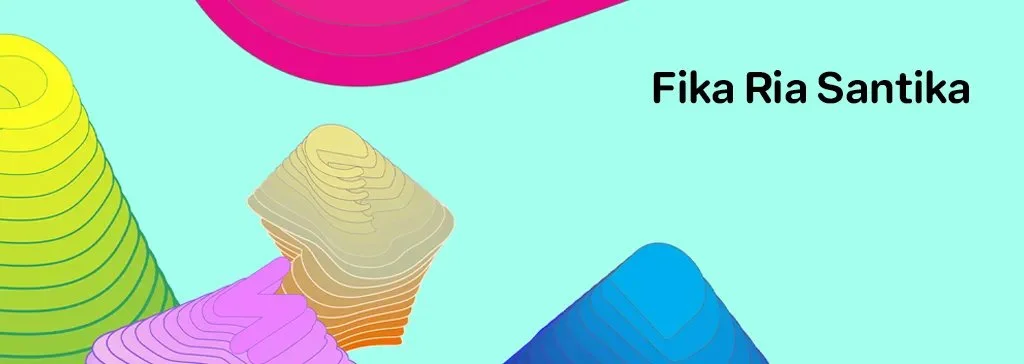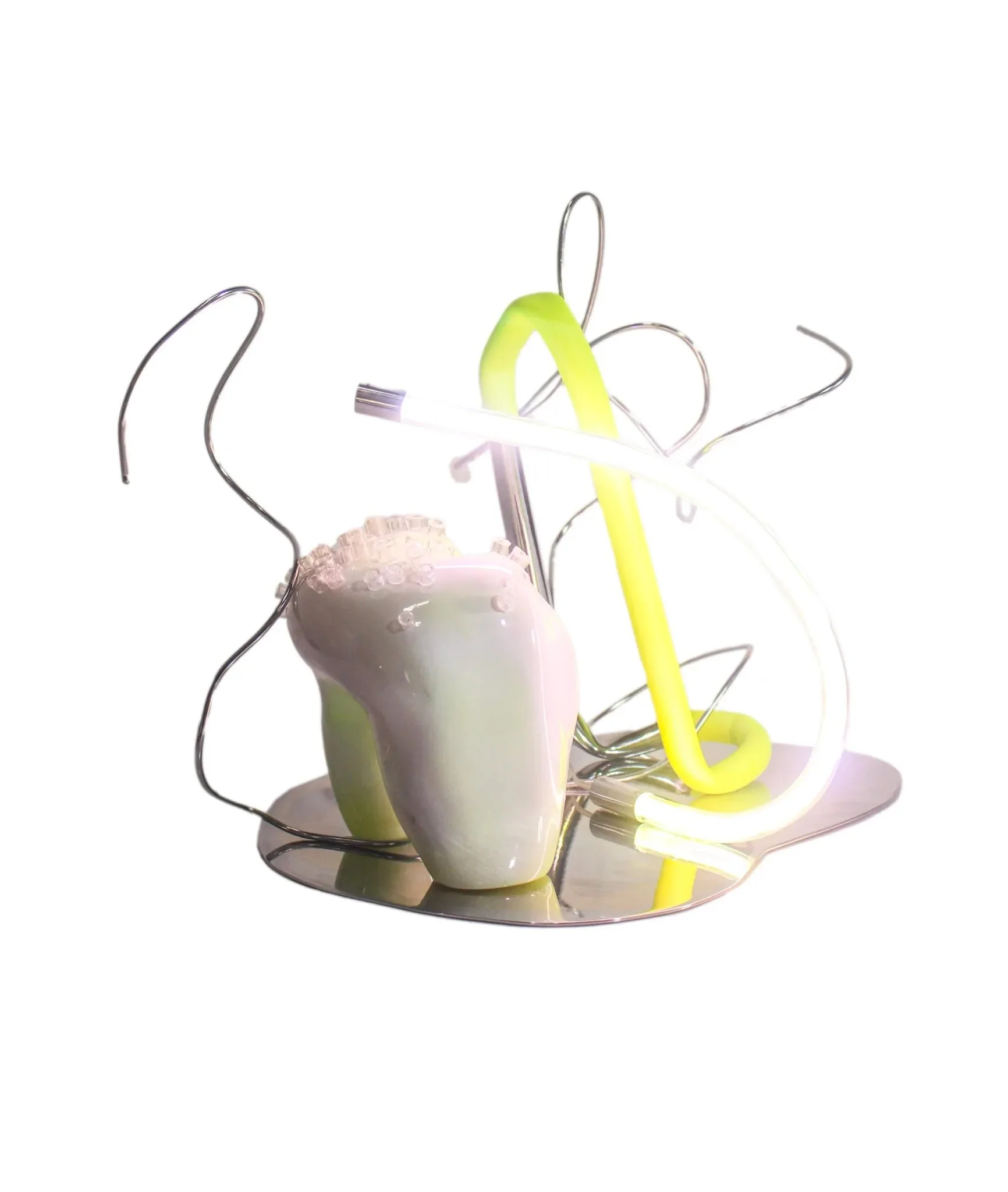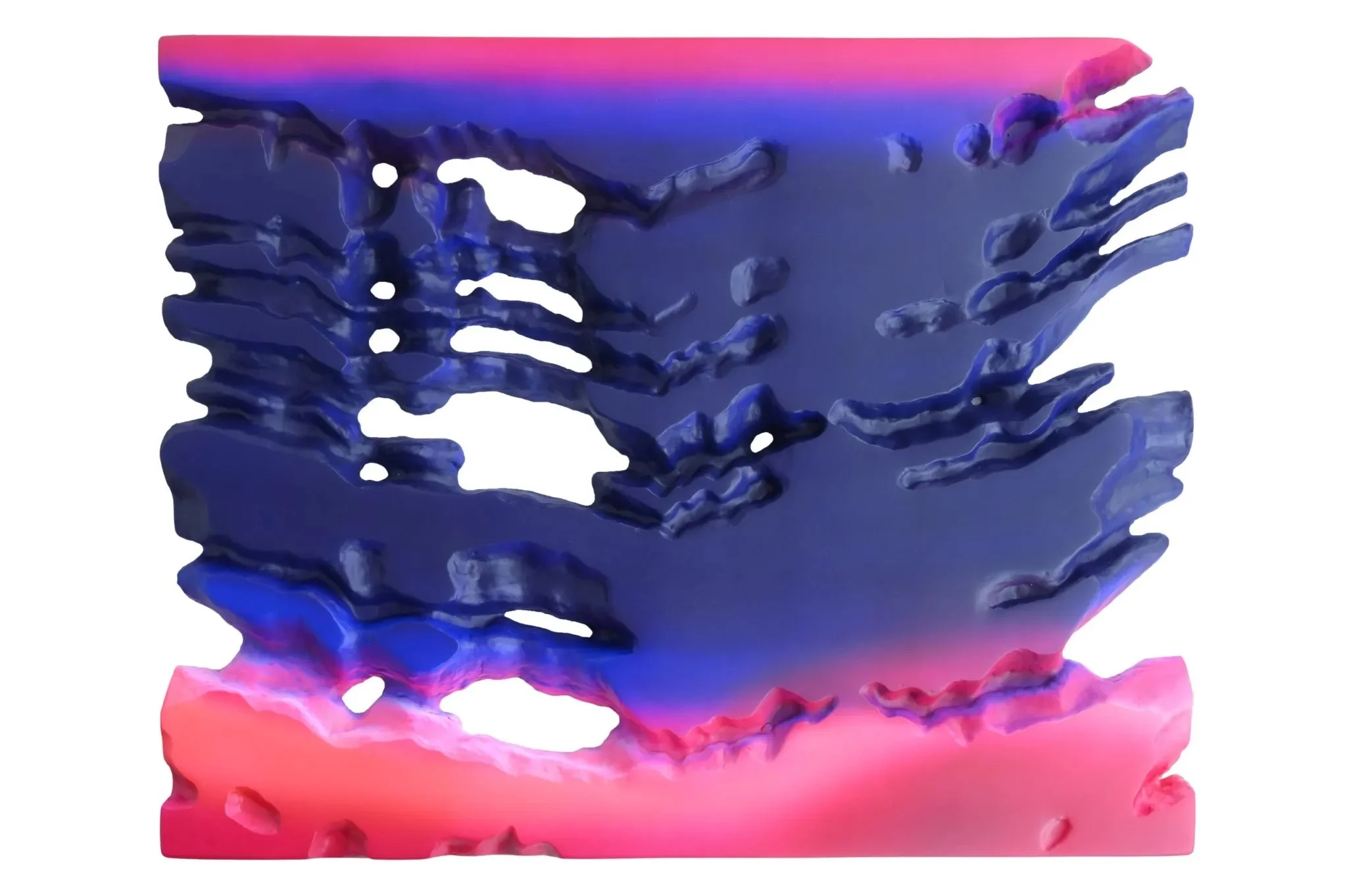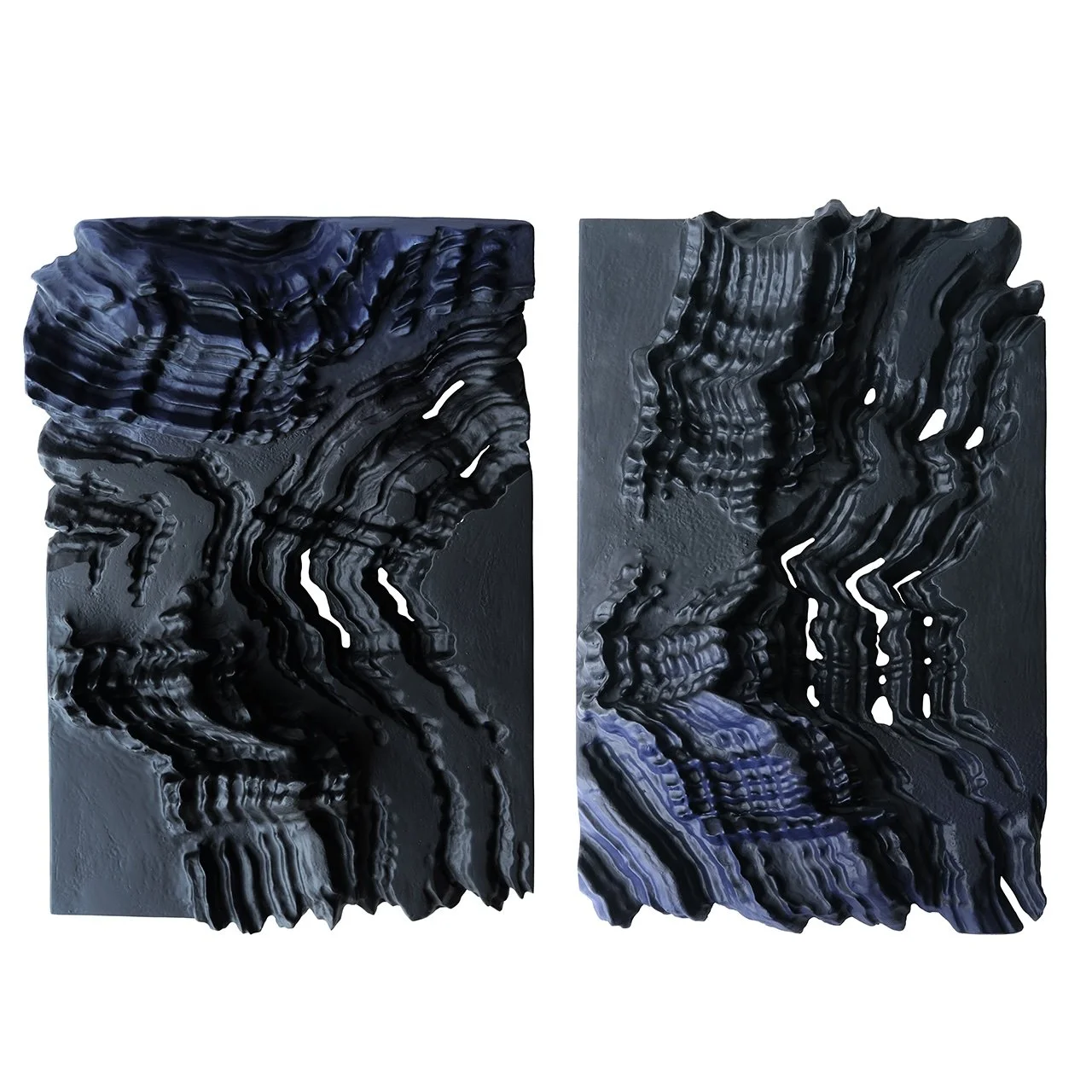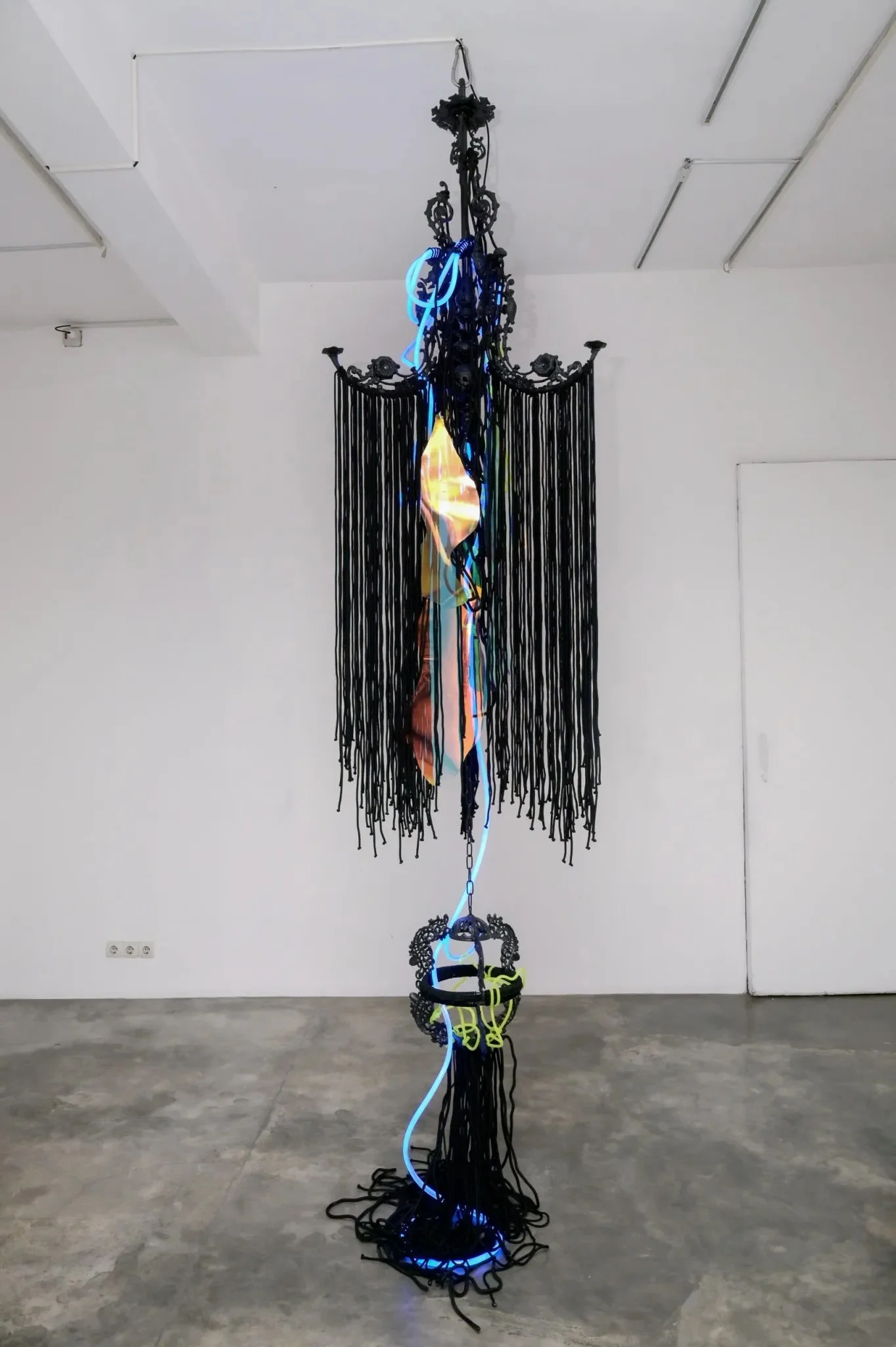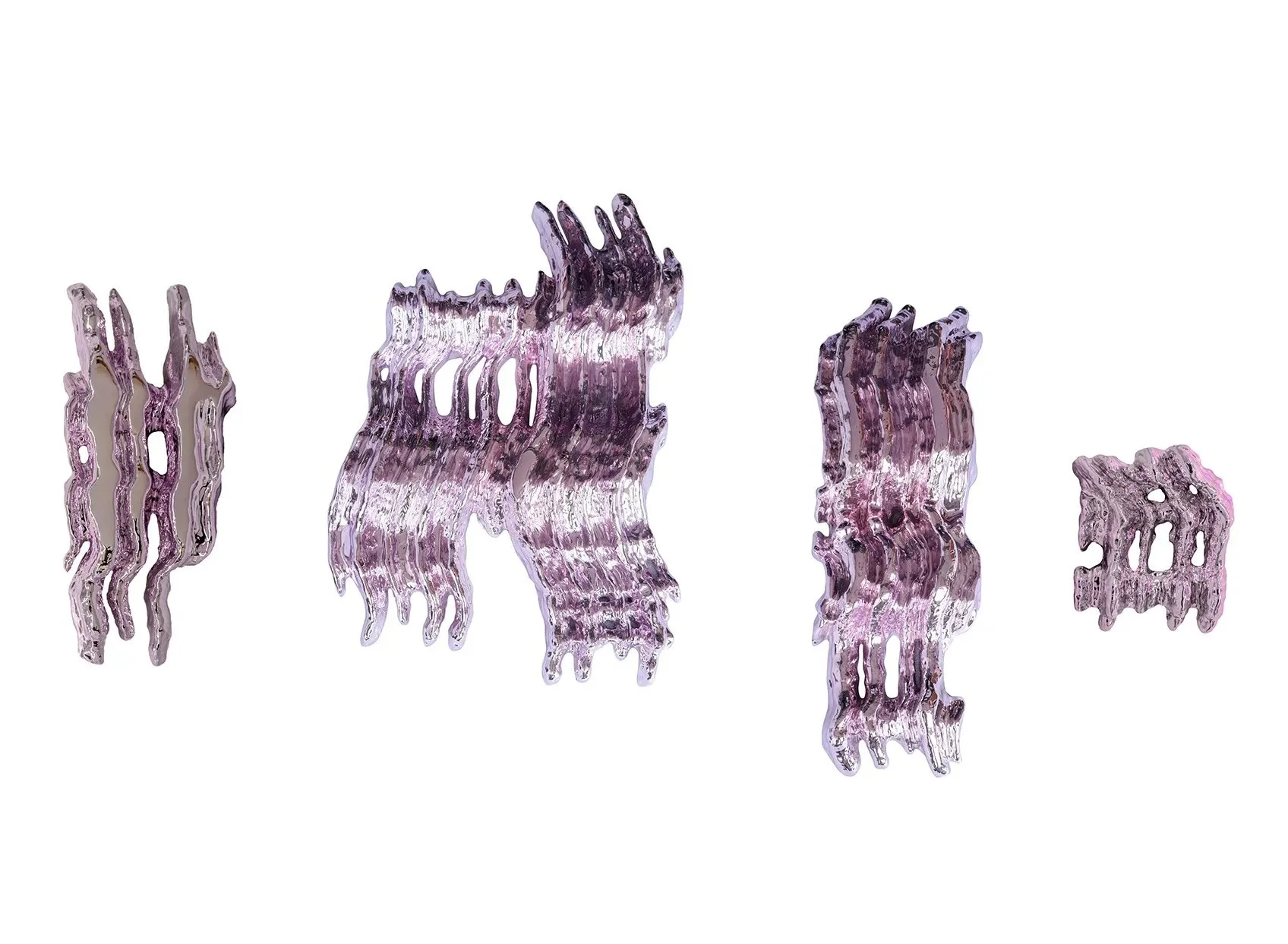Fika Ria Santika
(b. 1987, West Sumatra, Indonesia)
Nature has long been an inexhaustible source of inspiration for Fika Ria Santika, shaping both her artistic practice and personal philosophy. Raised in the Minangkabau culture, Santika has always been drawn to the proverb Alam Takambang Jadi Guru, or ‘Nature is the Best Teacher’ in English — this affinity has prompted the artist’s artistic explorations as she examines cycles, growth, layers, transitions, and uncertainties through her observations of nature. These elements have profoundly shaped her visual language.
Although Fika derives her creative stimulus from the naturally occuring world and its phenomena — the artist works with, manipulates, and creates compositions out of industrial materials, such as resin and acrylic. In this dichotomy between the natural and the industrial, Fika produces works that are a reflection of her personal intimacy with the natural objects she encounters, as well as the experiences of travel and migration had by the artists through varied cultural and geographical contexts.
“‘Alam Takambang Jadi Guru’ makes me contemplate the deeper meaning of nature’s role as a philosophy of life. This proverb is familiar to most Minang people, but it has left me wondering whether it retains its relevance amongst the youth in today’s society.”
Tumpuk Lapis Tampak isi: Rona 18
(Layers That Reveal Matter: Hue 18)
2023, Resin, Acrylic, and Neon Lights, 32 x 21 x 23.5 cm
_
Combining coloured resin and neon light, the artist produced varied dimensions of yellow and pink on a multi-dimensional acrylic surface, Tumpuk Lapis Tampak isi: Rona 18 (Layers That Reveal Matter: Hue 18) is based on the observation and characteristics of the property of hue. Through an exploration of materials unconventionally used in art, the result is an organic form no longer confined by its materiality or the mundane character of how one might generally perceive the materials presented.
Fika Ria Santika challenges the viewer to consider how these works and subsequently their materials function at different levels.
Tumpuk Lapis Tampak isi: Laras 10
(Layers That Reveal Matter: Harmony 10)
2023, Resin, Acrylic, and Neon Lights, 32 x 40 x 37 cm
_
Through her study of varied materials and their associated properties, Fika Ria Santika is continuously reaching a better understanding of nature’s character. In an attempt to represent “harmony” (laras), as observed in the naturally occurring world, the artist is exploring whether it is possible to create a visual portrayal of “harmony”.
Through the intentional manipulation of material and form, Tumpuk Lapis Tampak isi: Laras 10 (Layers That Reveal Matter: Harmony 10) manages to call to mind an organic combination of disparate entities such as hue and shadow,
“For Fika, the impact of merantau is manifest in what has been a process of exploration and experimentation that emerges in her constantly expanding artistic practice.”
Ruang Fana: Dinamika 17 (Transient Space: Dynamics 17)
2024, Resin and Polyurethane Paint, 77.5 x 102.5 x 5.5 cm
_
Fika Ria Santika reinterprets the original forms found in her environment, as in Ruang Fana: Dinamika 17 (Transient Space: Dynamics 17), converting them into a new format without losing the essence and emotions inherent in these natural objects.
Organic shapes are combined with the unnatural materiality of resin and colours of Polyurethane paint to give off an impression of artificiality, as the artist skillfully contrasts opposing elements that seem incapable of merging.
Ruang Fana: Dinamika 25 (Transient Space: Dynamics 25)
2025, Resin and Polyurethane Paint, 99 x 59 cm
Ruang Fana: Dinamika 26 (Transient Space: Dynamics 26)
2025, Resin and Polyurethane Paint, 100 x 59.5 cm
_
Nature presents a harmonious composition of contradictions and dualities. As the artist observes the forms of natural objects around her, she concurrently transforms them into new forms – focusing on space, line, and pattern. Present vaguely and implicitly in the folds, layers, and hues of Ruang Fana: Dinamika 25 and 26 (Transient Space: Dynamics 25 and 26), Fika Ria Santika internalises and processes the forms she has astutely observed and experienced in nature to produce her own personal and compelling visual motif.
Dinamika 14 (Dynamics 14)
2024, PVC, Braided Rope, Aluminium, and LED, 350 x 79 x 79 cm
_
A standout in Fika Ria Santika’s body of work, this large-scale installation traces its roots to the relationship between humans as observers and the surrounding nature. Digital prints, neon LED lights, and strings of black braided rope are either attached to or hung from an imposing raised chandelier. Dinamika 14 (Dynamics 14) is composed of an assemblage that transforms mundane objects into an artwork that commands an overbearing presence while simultaneously exploring the notion dynamism - in parallel to the artist’s existing visual repertoire and motifs.
“In her work, artist Fika Ria Santika reflects that events in the natural world such as cyclical growth, the changing seasons, and the unpredictability of natural phenomena are integral to the worldview of her ethnic group, the Minangkabau or Minang from West Sumatra, Indonesia.”
Ruang Fana: Dinamika 13 (Transient Space: Dynamics 13)
2024, Resin and hydrochrome, 54 x 25cm ; 50 x 80 cm; 74 x 30 cm; and 21 x 24 cm
_
Simultaneously evoking a sense of movement while presenting a stable solidity in its mass and materiality, Ruang Fana: Dinamika 13 (Transient Space: Dynamics 13) presents Fika Ria Santika’s paradoxical artistic approach and technique.
Although the artist derives her creative stimulus from organic forms — Fika deliberately works with industrial materials. She eclectically combines these seemingly separate and incompatible aspects of everyday life, creating a series of works that harmonises them in a transcendental manner.

